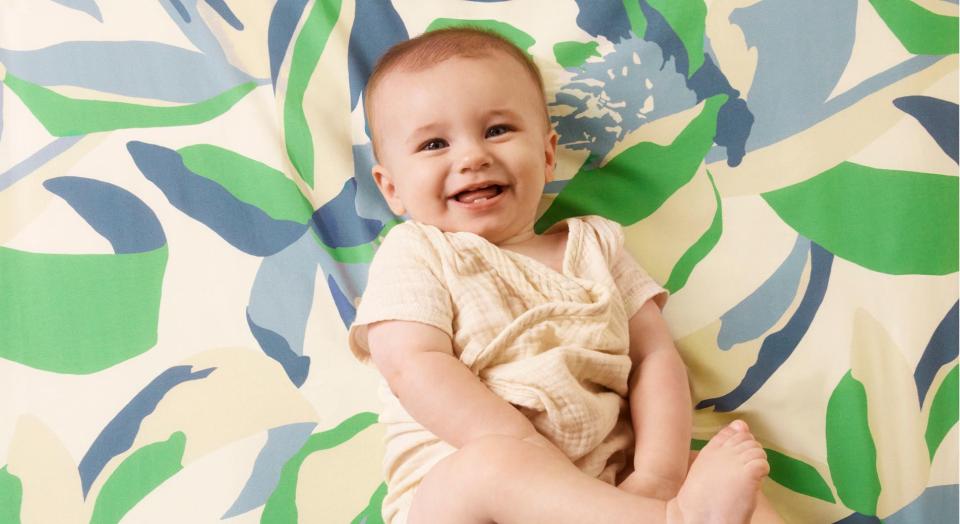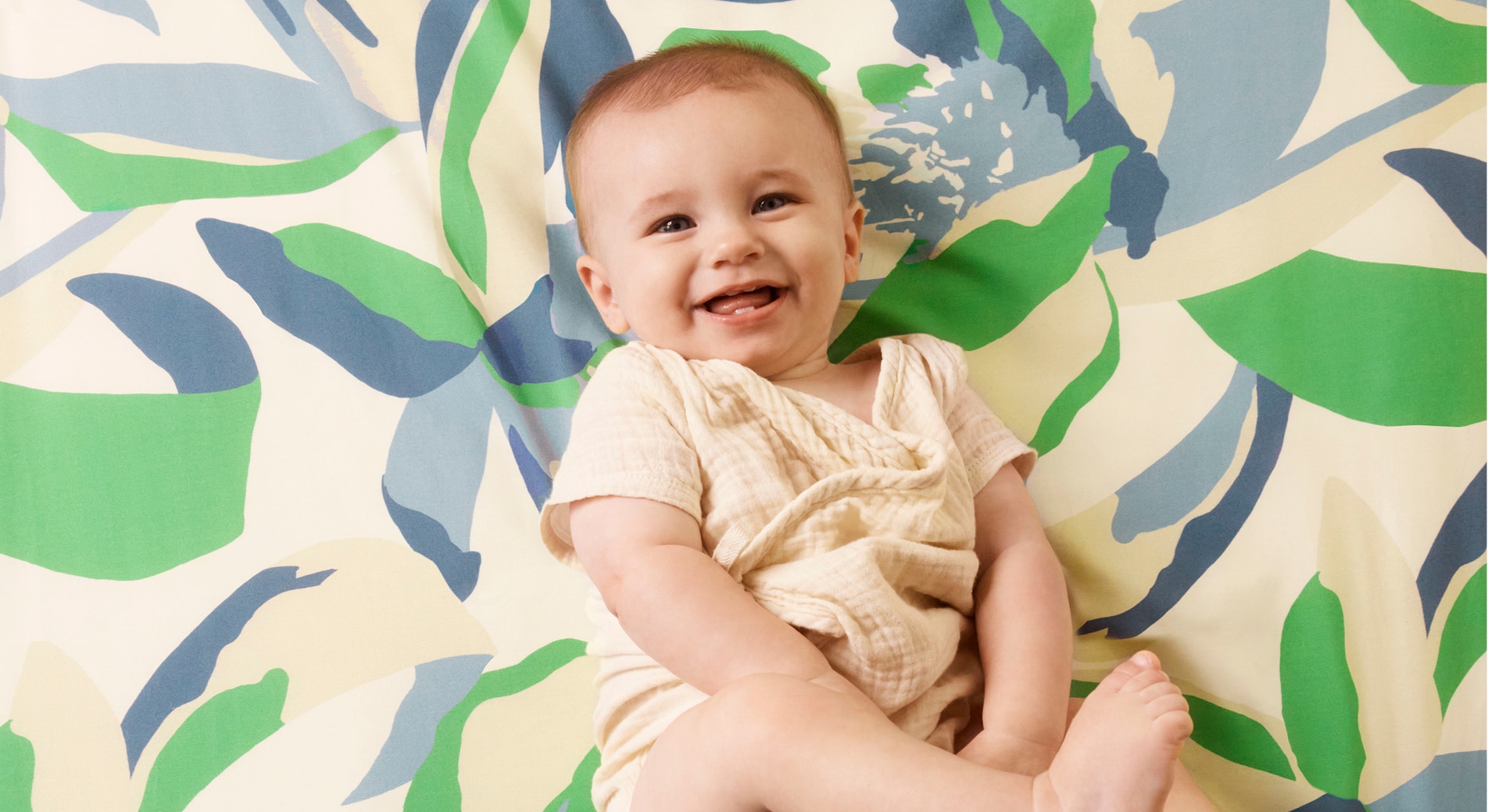Why We Love These Gender Neutral Baby Colours
There are two colours most commonly associated with the sex of a baby. Let us guess — before we even went into specifics, this same duo of shades immediately popped into the front of your mind.
Pink and blue — are we right?
From gender reveals to aisles at your local superstore, we’re guessing you’ve seen an overflow of these two stereotypical shades. You may have even found yourself wondering “Why is it pink for a girl and blue for a boy?”
The history behind it is a bit more complicated; dating back over a century. It’s less about boy colours vs girl colours — the concept of colour as a signifier of gender was only introduced in the 20th century. But we’re getting ahead of ourselves.
The History of Colour Choices for Babies
For centuries, most parents would dress their children in white. According to Britannica, white clothing was popular as it could be easily bleached; it was a matter of practicality.
Then, come the mid-19th century, pastels arrived as colours for babies — including pink and blue, but not exclusively. Fast forward to 1918, and the concept of blue and pink as a signifier of a child’s sex was born. Back then, however, pink was for boys and blue for girls.
Why? According to a trade publication from the time, “Pink, being a more decided and stronger colour, is more suitable for the boy, while blue, which is more delicate and dainty, is prettier for the girl.”
This trend swapped and became what we know it as today in the 40s. Pink for girls, blue for boys. Women’s liberation in the 60s and 70s saw this dip slightly, bringing a rise in gender-neutral colours and fashions.
The 80s introduced prenatal testing, bringing the stereotypical shades back — retailers saw the chance to sell gendered merchandise.
Another 40 years on, and we’re seeing a change. At Sheridan, our favourite gender-neutral colours for babies are levels of green, peachy-keen oranges, and my first monochrome.
Levels of Green
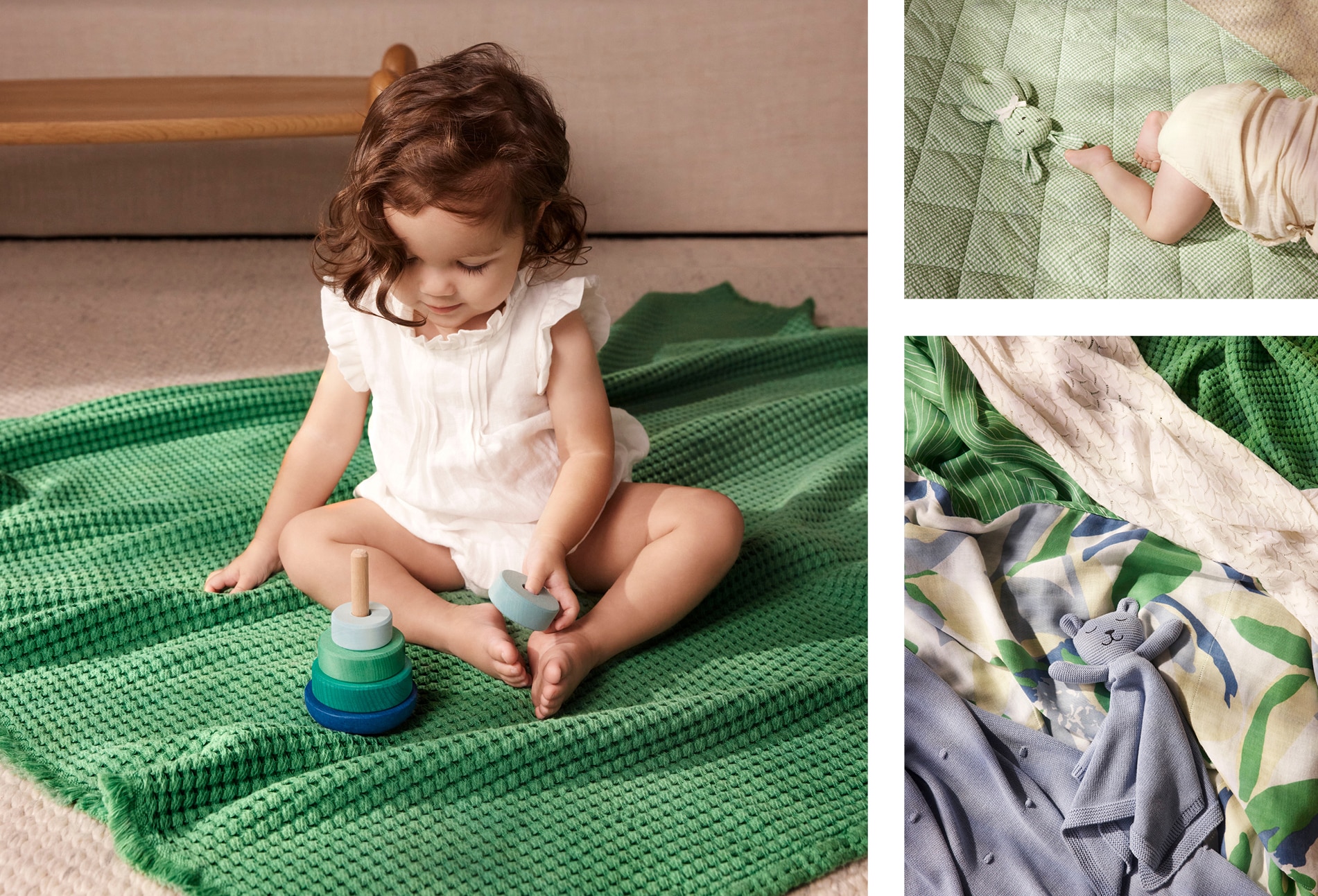
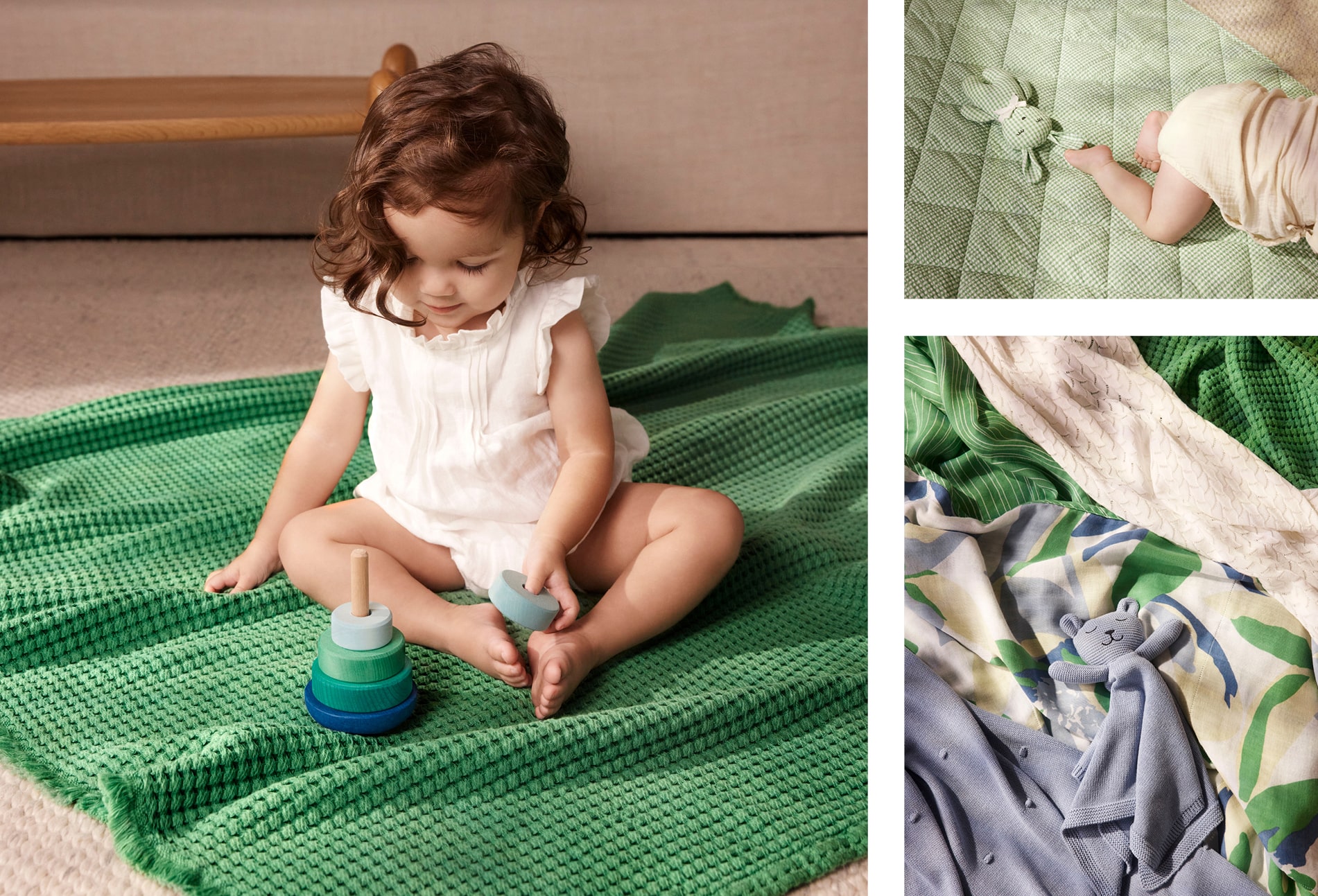
When you think of the colour green, what do you think of? We’re 95% sure scenes from nature just sprung to mind. Because of this association, it’s seen as relaxing and refreshing — and optimistic. Dulux even says leafy greens are “perfect for a nursery or bedroom”.
It’s a “trending colour” for Sheridan, says our Head Designer for Baby, Romaine Sutton. “Bold and fun, it adds a saturated touch to your nursery.”
A gift for your little one, or for a friend’s imminent arrival, Kiko is crafted in this beloved seasonal shade — with a cheerful gingham pattern. Our Mysie Wrap Set is available this season in the colour pea — and with two patterns to choose from (one sweet, one playful).
Peachy Keen Oranges
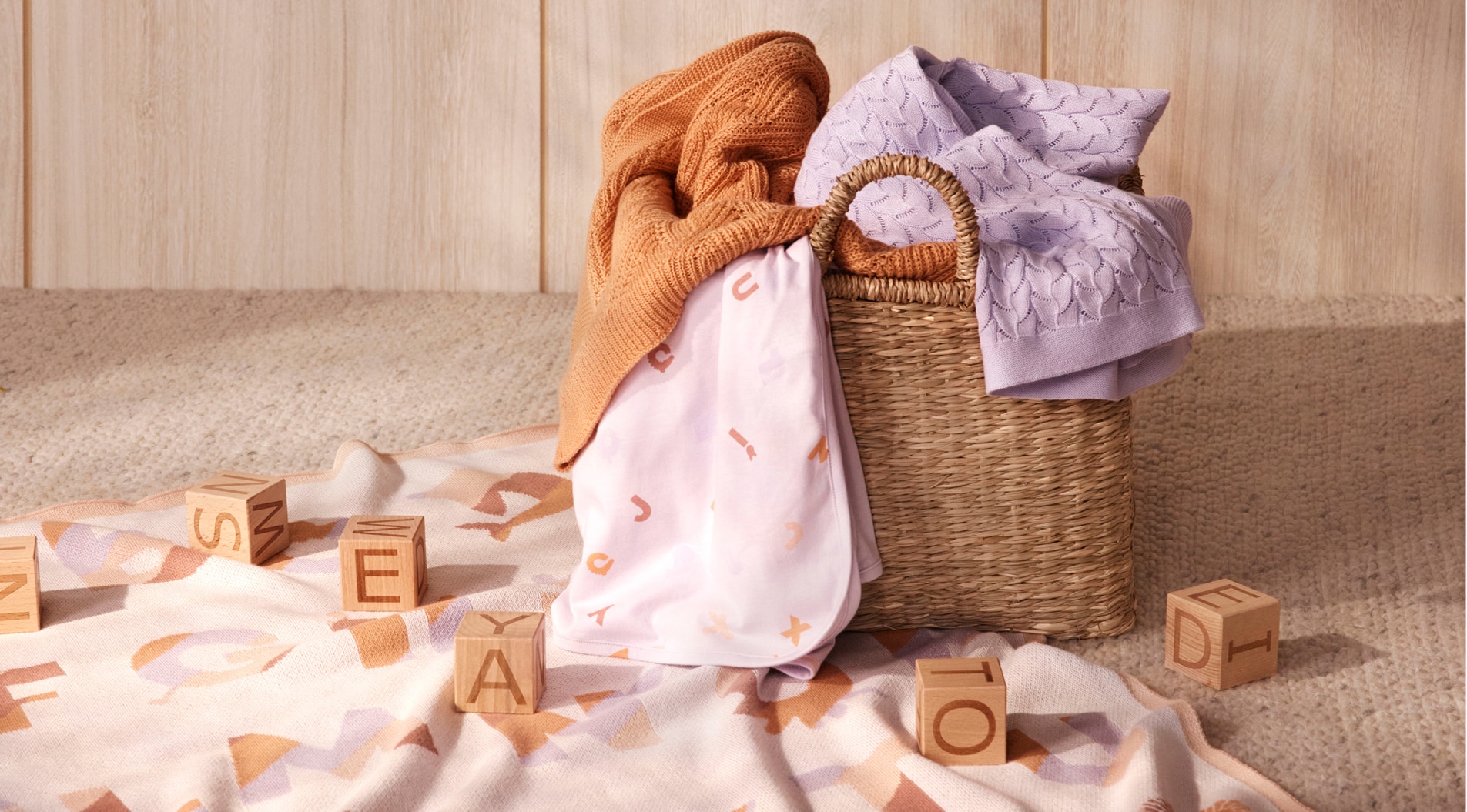
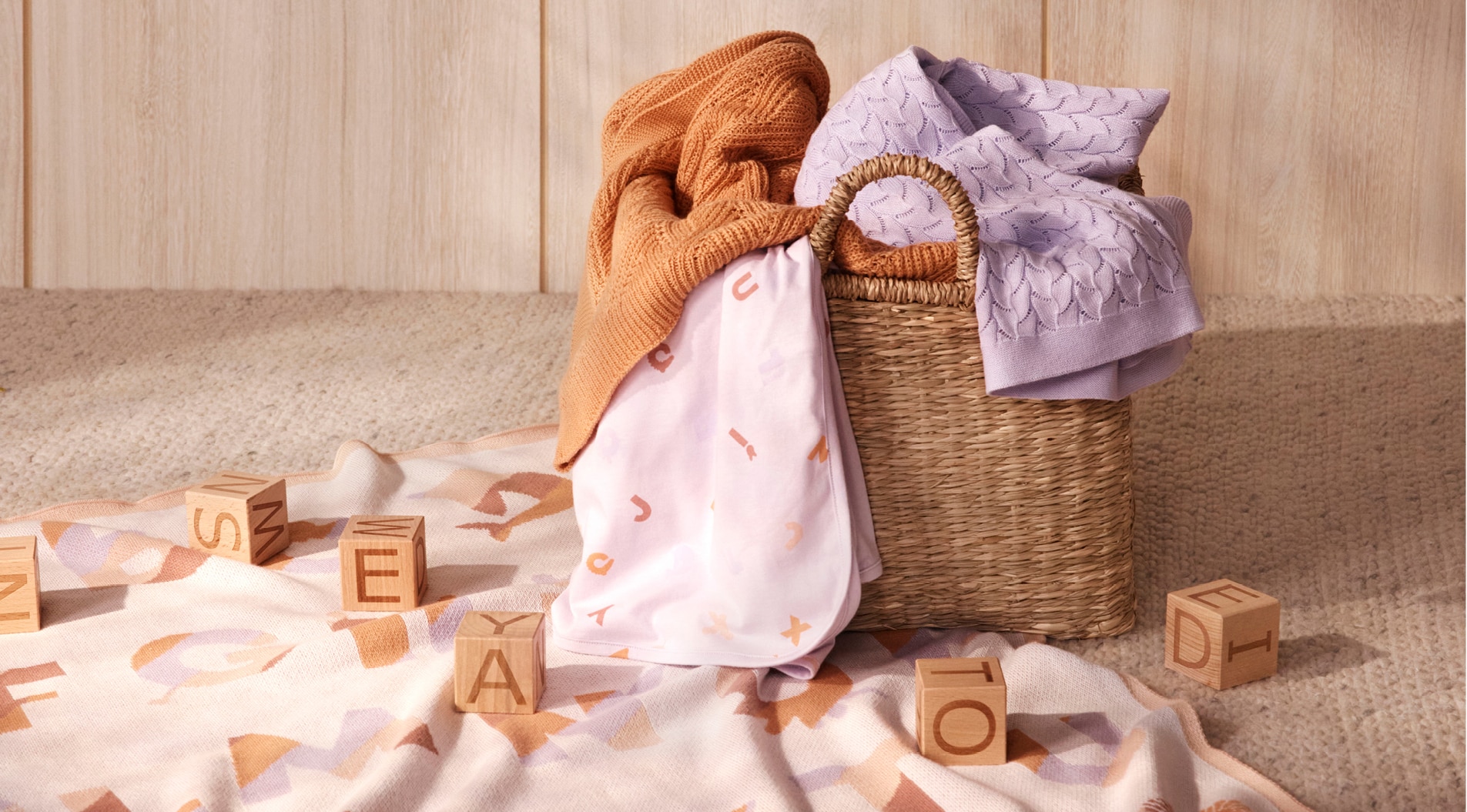
Colour trends for babies are moving towards warmer shades, Romaine tells us. It also adds a “contemporary touch,” she explains.
Orange is great for children as it’s a colour that radiates warmth and energy — stimulating and thought-provoking, according to Dulux. Peach tones are “sweet, pleasant and friendly”, their brighter counterparts are energetic, playful, and encouraging — sounds perfect for a little one.
Reilly Stripe, in the warm shade of marmalade, is perfect for your little one. Whether the fitted cot or bassinet sheet, it’s crafted from organic cotton. Looking for a bright touch this summer? Try our Summer Fun Baby Hat, in the same shades (and stripes!).
Kelvin is another one of our orange offerings. A friend for our adored little Oaky, it’s crafted from one of our considered fibres, leftover cotton yarn — twice as nice.
My First Monochrome
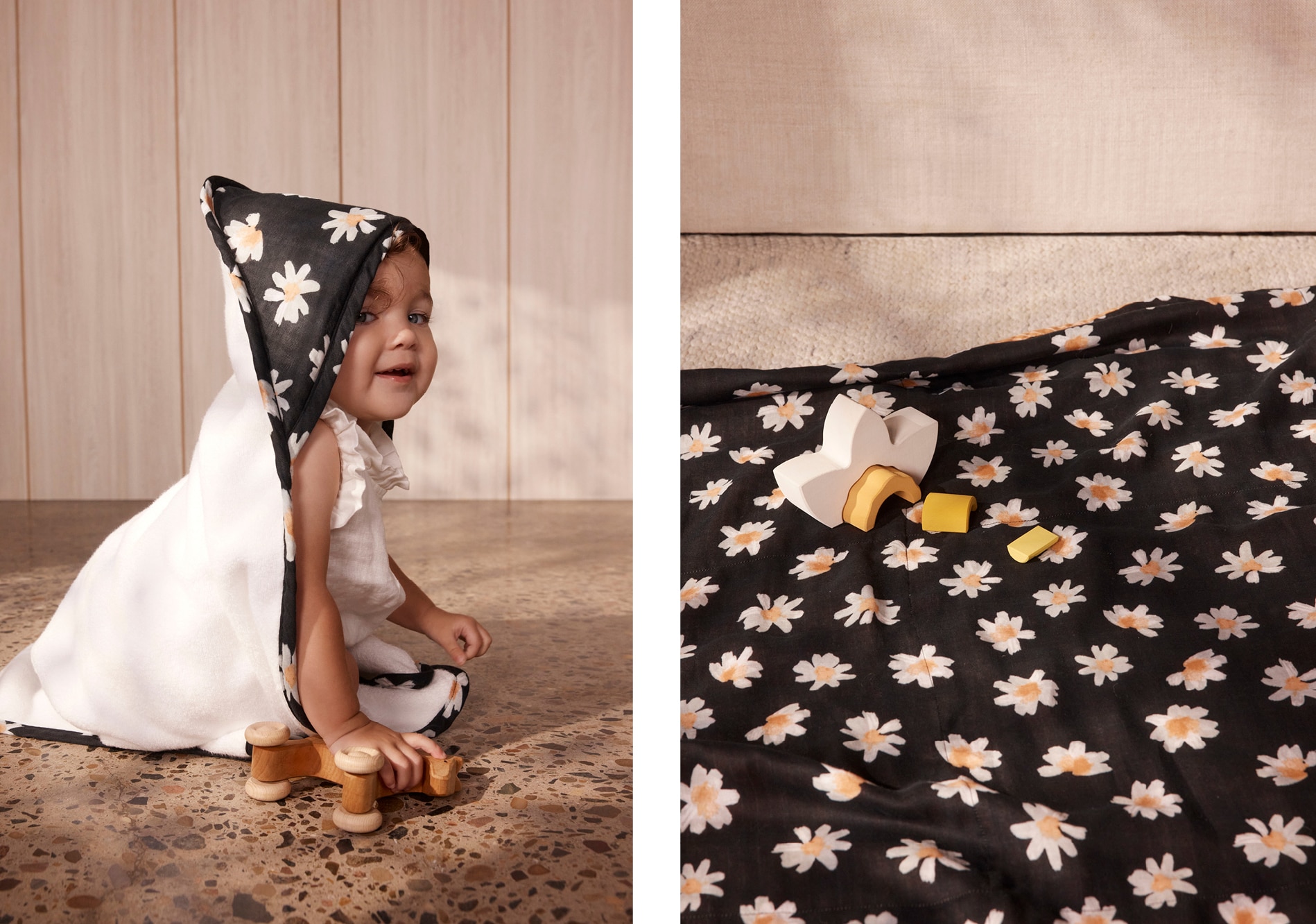
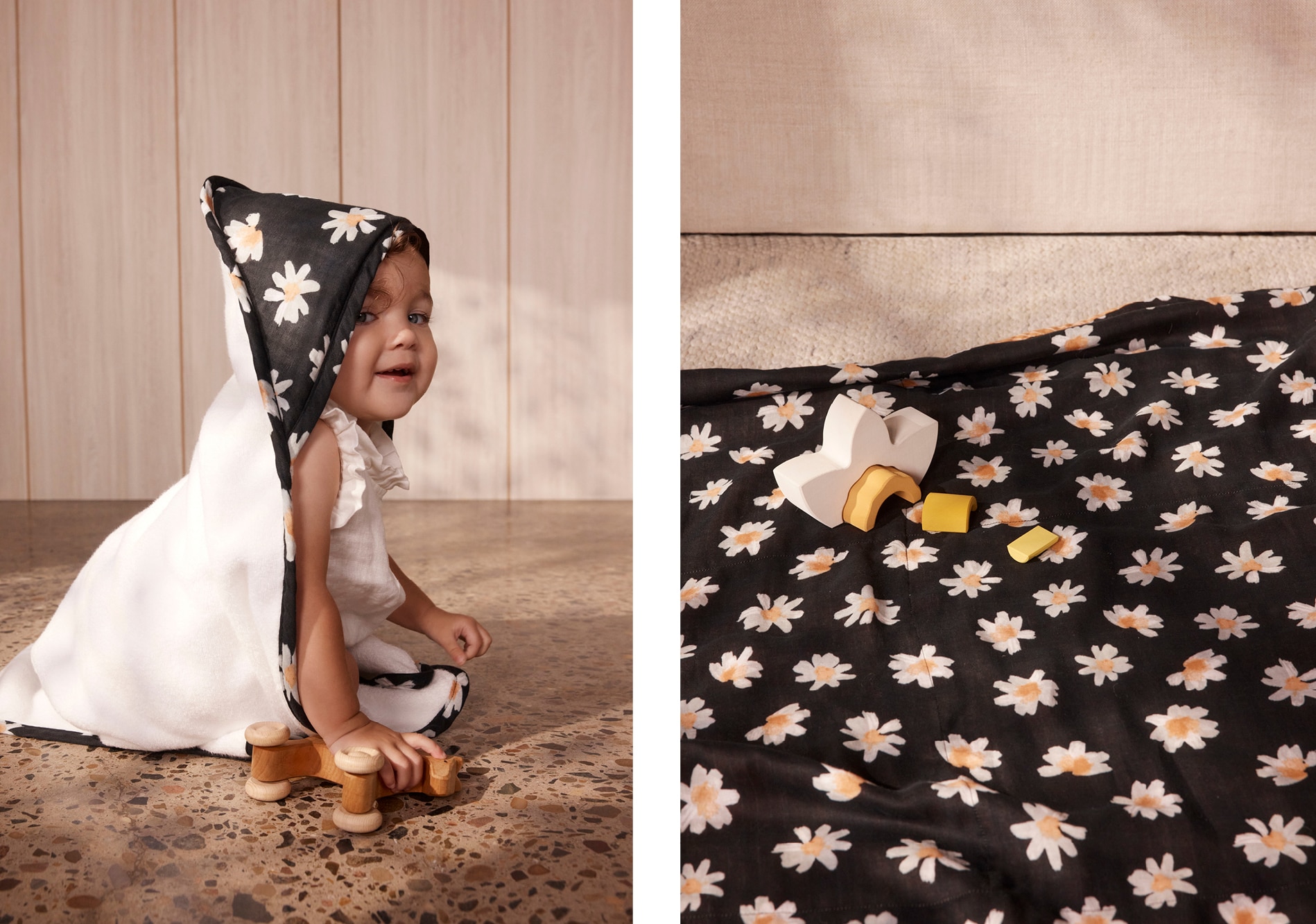
Before birth, babies can tell the difference between light and dark. After delivery, they can see in black and white. This fun fact is part of the reason we liked black and white so much as gender-neutral shades — this high contrast is great for their development.
It was also considered with parents in mind, with Romaine saying it's for families who “have that style in their own home and want to extend it into the nursery.”
Bring these graphic shades into their space with our Keelan Baby Blanket, or Albie Hooded Towel. Boasting the same darling daisy artwork, it’ll delight both parent and baby.
